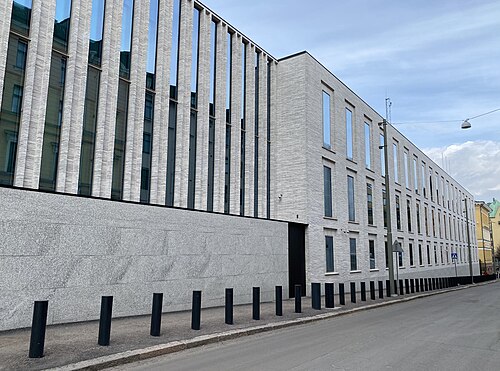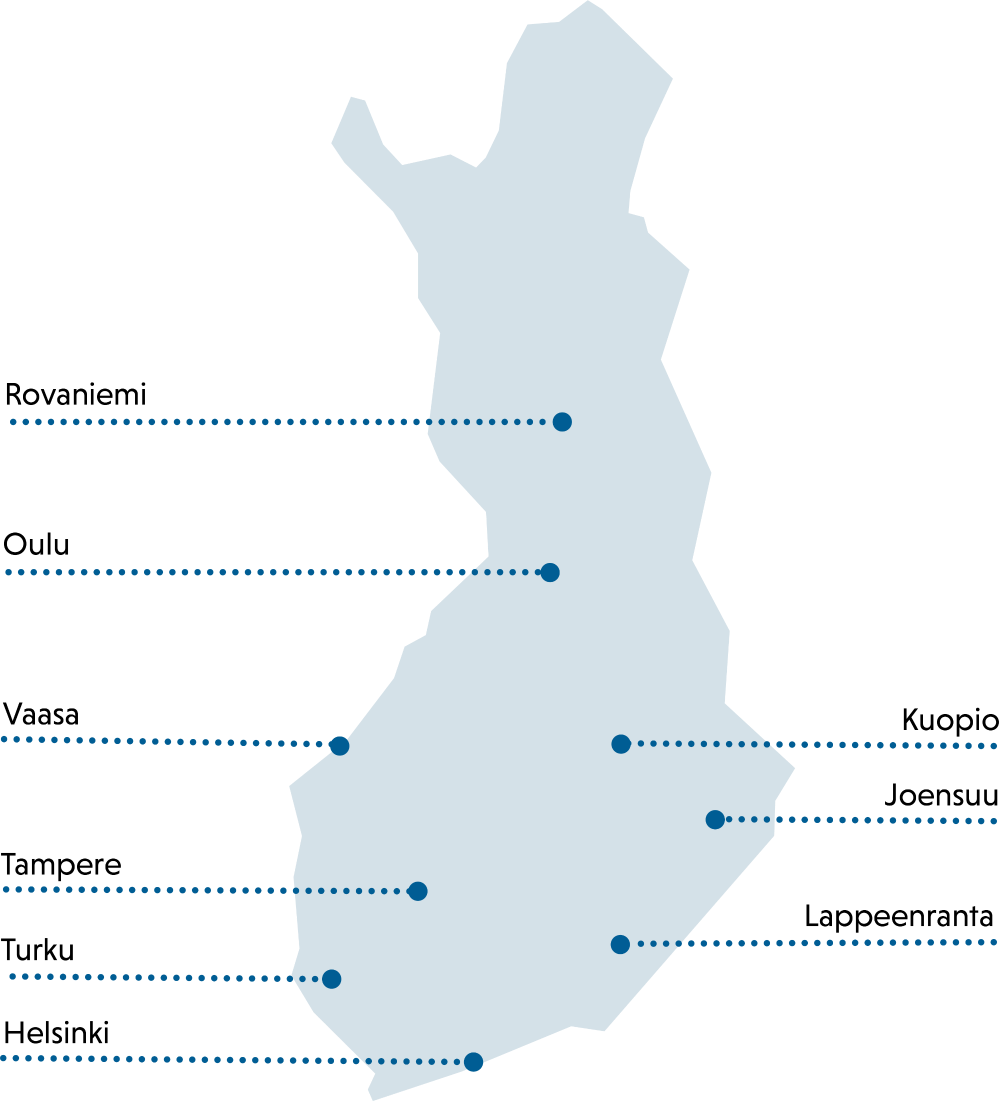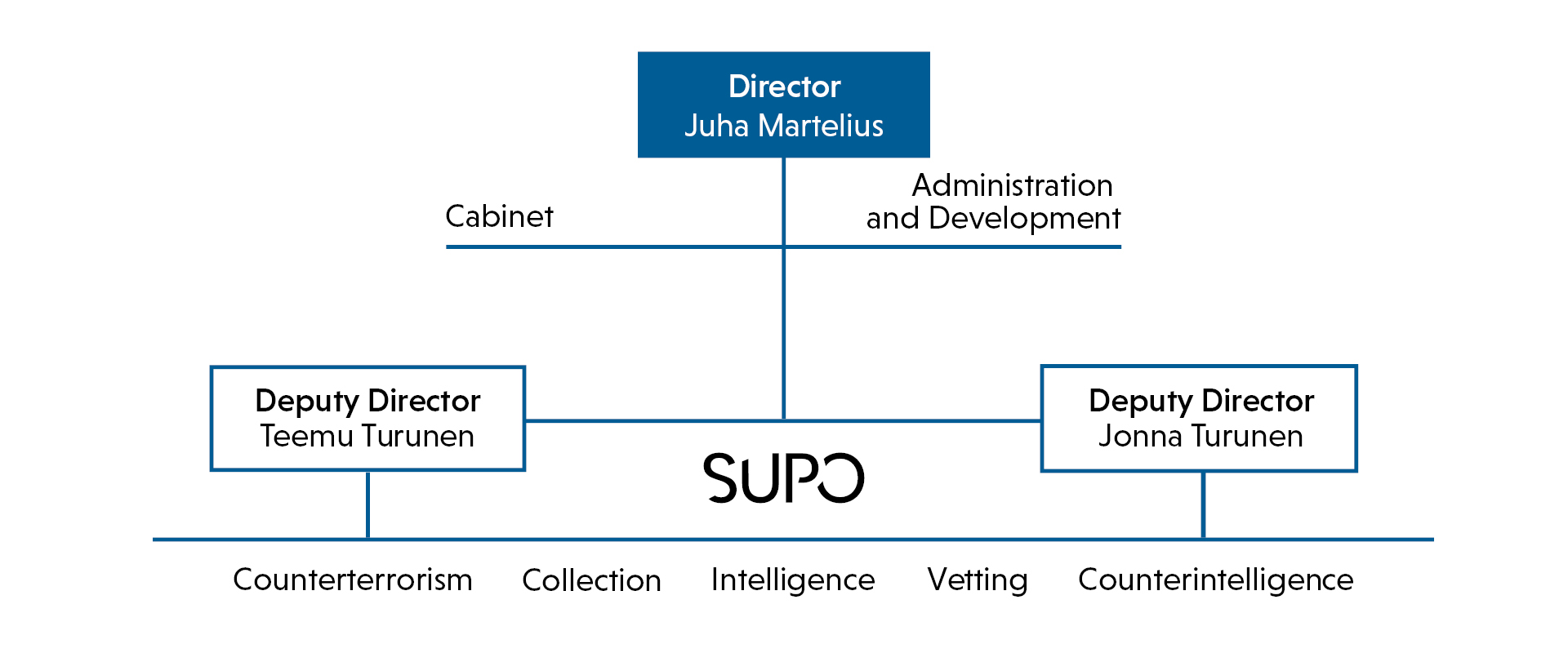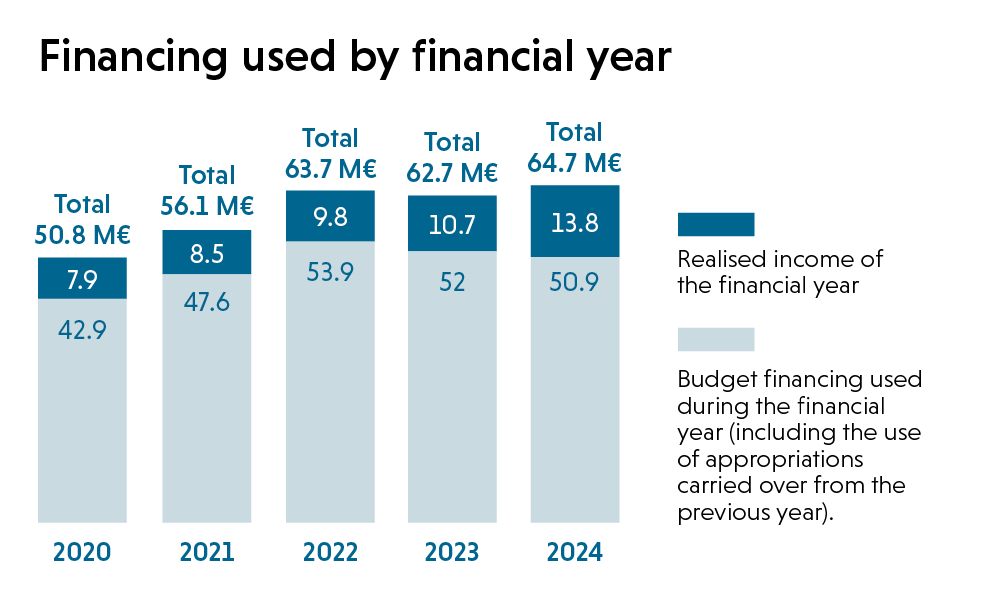The Suojelupoliisi (SUPO), Finland’s Security and Intelligence Service, is the country’s primary national intelligence agency. With around 584 employees, it is tasked with protecting Finland and its citizens from terrorism, espionage, and other hybrid threats. Formally established in 1949 in the wake of the onset of the Cold War, SUPO evolved into a modern intelligence agency with well-established international ties and partnerships. Its position and role in Finland’s security is highlighted by the country’s proximity with Russia – the states share a 1,340 km (830 mi) long border. Tensions have risen since Finland decided to join the NATO alliance in 2023. Additionally, about a third of Finland lies above the Arctic Circle, making it an important player in that highly contested region.
Images sourced from SUPO.

1 History
SUPO’s predecessor organization, the National Investigative Police (EK) existed between 1919 and 1937, established briefly after Finland’s independence from the Russian Empire following the socialist revolution. In 1937, the EK changed its name to State Police (Valpo). The following years were a turbulent time for the agency, especially after the end of World War II, when political infighting between left and right-leaning governments steered Valpo in opposing directions until its dissolution in 1948. The then newly elected Finnish government of Karl-August Fagerholm established SUPO as a new organization at the end of 1948 and it began its operations in early 1949, marking the beginnings of today’s agency. [source]
Its early missions were focused on tracking communist activities and Soviet espionage. Finland’s officially neutral stance during the Cold War put it in a challenging position where Finland sought to thwart Soviet threats while avoiding direct conflict.
Following the dissolution of the USSR, and particularly after the 11 September 2001 terrorist attacks in the US, SUPO pivoted more towards counterterrorism operations and stronger cooperation with foreign intelligence agencies, particularly in Europe and the Nordics. [source]
Today, SUPO faces a complex set of hybrid dangers amid rising tensions with foreign states, terrorist threats, and cyberattacks.

2 Organisation and Structure
SUPO officially employs around 584 people and is headquartered in Helsinki, the country’s capital. It also has regional offices in:
- Joensuu
- Kuopio
- Lappeenranta
- Oulu
- Rovaniemi
- Tampere
- Turku
- Vaasa [source]

The regional offices tend to be located in close vicinity to police stations to facilitate collaboration and sharing of expertise with local law enforcement. Their geographical distribution ensures a nationwide “coverage” of operations.
SUPO reports to the Finnish Ministry of the Interior and is headed by a Director and two Deputy Directors who lead the service and its mission. In 2024, SUPO was reformed, resulting in a structure consisting of eight departments, each with its own head:
- Regional Department
- Headquarters
- Administration and Development
- Counterterrorism
- Counterintelligence
- Intelligence
- Collection
- Vetting (background checks) [source]

3 Mission
SUPO is tasked with protecting Finland’s national security from a diverse range of threats. It gathers intelligence both domestically and abroad. Some of its main areas of responsibility are:
- Counterintelligence: Combating foreign espionage targeting Finnish interests remains a top-priority for SUPO. China, Iran, and Russia are the most notable state-actors in this domain. In recent years, foreign espionage targeting Finland narrowed to focus on the central government and its foreign and security policies. Intelligence activities have increased since Finland became part of NATO. [source, source]
- Counterterrorism: The current terrorism threat level remains elevated. SUPO notes that the highest risk comes from lone actors and small groups pursuing far-right or radical Islamist ideology. It notices a particular increase in far-right counterterrorism targets. [source, source]
- Cybersecurity: SUPO is responsible for addressing the rise of cyber attacks and cyber espionage. SUPO cooperates closely with the National Cyber Security Centre of the Finnish Transport and Communications Agency (Traficom), the National Bureau of Investigation (NBI), and local police departments. [source, source]
- Hybrid threats: These include threat vectors that fall into multiple – or no – other categories. Examples include malign influence campaigns, weaponised migration, and attacks on critical infrastructure. [source]

According to its website, other areas of SUPO’s intelligence work include:
- proliferation and use of weapons of mass destruction (WMDs) and dual-use technology
- activities that seriously jeopardise the democratic social order
- activities that endanger the life or health of large numbers of people or vital functions of society
- any crisis that compromises international peace and security
- activities that threaten the security of international crisis management operations
- any activity that seriously compromises the security of Finland’s international aid and other international operations
- international organised crime that threatens the democratic social order [source]
3.1 Current Threat Environment
From Finland’s perspective, Russia remains the largest continuing threat. SUPO’s director Juha Martelius in March warned that even if the war in Ukraine comes to end, the threat is unlikely to cease as Russia would have more resources available to use in other domains. Russia has also been suspected of damaging undersea communication cables running through the Baltic Sea. [source, source]
Additionally, China and Iran have increased their intelligence operations in the country over the recent years to pursue dissidents, obtain classified information, and gain economic leverage. Iran, for example, reportedly uses criminal networks to advance operational goals in Finland. [source]
As an Arctic state, Finland is imminently affected by this region’s growing geopolitical importance amid great power competition. As China and Russia increasingly collaborate on establishing a stronger foothold in the Arctic for economic, political, and military leverage, SUPO’s focus on this area is likely to grow. Finland’s icebreaker expertise is one area of increased foreign intelligence interest. [source]
3.2 Methods
Depending on the mission and threat, SUPO has a mandate to collect intelligence through various intelligence collection methods. While the service emphasizes open-source intelligence (OSINT) as a key part of its arsenal, it also employs other collection techniques:
- Interception of telecommunications / signals intelligence (SIGINT)
- Intelligence gathering in lieu of interception of telecommunications
- Telecommunications surveillance
- Procurement of base station data
- Technical hardware monitoring
- Transmission reproduction
- Network traffic intelligence
- Systematic monitoring
- Covert intelligence gathering
- Acquiring intelligence that identifies a telecommunications address or terminal hardware
- Undercover operations
- Undercover purchasing
- Guided human intelligence (HUMINT) operations
- Duplication
- Intercepting a dispatch for the purpose of duplication
- On-site audio monitoring
- On-site visual monitoring
- Technical surveillance
- Intelligence gathering on specific locations [source]
SUPO is the only agency in Finland that is permitted to conduct civilian intelligence – as opposed to military intelligence conducted by the Finnish Defence Intelligence Agency (FDIA) – as defined by Chapter 5a of the Police Act. [source]
In 2023, SUPO launched a project, co-funded by the European Union (EU) to utilise artificial intelligence (AI) for intelligence analysis. It aspires to facilitate the analysis of a growing amount of data. [source]
4 Oversight
Finland has a comprehensive system to oversee its intelligence agencies. The main oversight body is the Intelligence Surveillance Commissioner who has access to documents and facilities of the SUPO to carry out inspections. The commissioner also has the right to monitor the use of intelligence methods in real-time and, if necessary, halt the activities. [source]
The commissioner’s recent annual report, published in May 2025, concluded that SUPO carried out its intelligence work in accordance with the law. [source]
Additionally, the parliamentary Intelligence Oversight Committee (IOC) is responsible for general supervision of Finland’s intelligence service. An academic paper criticized its limited effectiveness, as its work is often constrained by the willingness of the intelligence community to cooperate. Furthermore, the IOC lacks direct punitive powers to enforce change. There has also been some concern about partisanship within the committee. [source]
5 Conclusion
SUPO is a key pillar in Finland’s national security architecture. It evolved from a police agency to a multifunctional intelligence service positioned to ensure Finland’s security. As Finland navigates its NATO membership, great power uncertainty, and rising tensions in the Arctic, SUPO will need to remain adaptable and vigilant to counter evolving threats and protect Finland’s interests. Looking ahead, we assess that greater integration with NATO intelligence services, a continuing focus on Iranian, Chinese, and Russian activity, and cyber operations will play significant, if not increasing, roles in SUPO’s future.